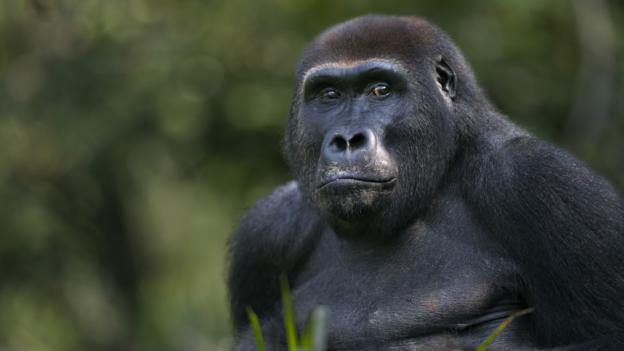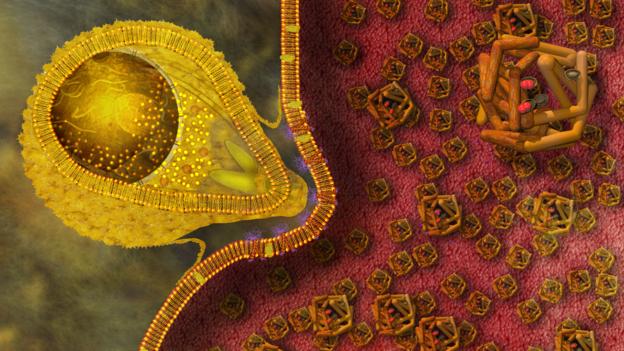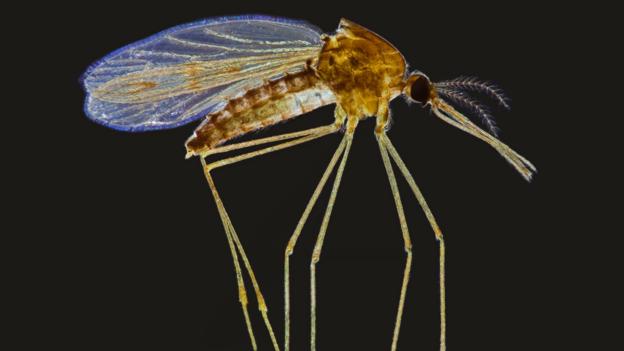The malaria-causing parasites are younger than we had originally thought. The disease kills half a million people every year, a number which was far greater in centuries gone by. Scientists have found out that malaria originated from animals and macheted itself into humans.
Malaria can be transmitted into human beings through a single mosquito bite – a fact that has made this disease almost impossible to counter.
Plasmodium falciparum protozoan parasite is the source of the deadliest malaria. It is the most prominent malaria causing parasites.

Western gorilla’s faecal samples were examined. PHOTO: Anup Shah/Naturepl.com
Now scientists know that mosquitoes are the carriers of the disease, not the source. So how do we trace the source? – This has been very challenging for scientists. Until very recently scientists have been baffled by this very question.
To understand the evolution of the disease, it is important that we trace it back to when it started affecting humans. Only through studying the disease in its purest original form, we can unlock its ‘secrets’ and combat it effectively.
In 2010, there was a breakthrough. Scientists found out that Plasmodiumparasites in western gorilla’s waste (feces) was similar to one of the three Plasmodium parasites that humans host. However, it is not clear when the gorilla parasite found its way into humans.

Illustration of malaria merozoite entering a red blood cell. PHOTO: Carol & Mike Werner/SPL
This was a remarkable discovery. We had originally thought that the disease was transmitted through apes (or even early species of human beings). Now we know that we were infected by Gorillas.
How did malaria start in humans?
It is now believed that a mosquito bit a gorilla and transmitted malaria parasite. The gorilla then bit a human being and injected the parasite into our species. Once humans became infected, the disease spread rapidly. Mosquitoes being the carriers, spread it from one person to another.

Malaria originated from a single bite PHOTO: Scenics & Science/Alamy Stock Photo
But this raises more questions than it answers (And no one of the questions is not “when have we ever seen gorilla bite a human being”).
More than how, scientists would like to know when the gorilla parasite found its way into human beings. That is the key in tracing the origins of the disease.
The problem scientists faced was that fecal samples of gorilla contained only Plasmodium DNA. To carry out the research, they needed full genome sequences. It would help them pinpoint the timeframe of transmission. In order to get full genome sequences, scientists needed blood – originally wild gorilla blood.
But the blood of wild gorillas is almost impossible to obtain. Fortunately the DNA structure of chimpanzees and gorilla match to a great extent. Therefore scientists got the blood samples from chimps that were living in Cameroonian sanctuaries – only a little distance away from wild chimps.
A new team of researchers have now obtained all the necessary genome sequences. A detailed study was conducted and surprising discoveries were made regarding the origins of the deadly malaria parasite.
The parasites obtained from chimps was 10 times as diverse as the human version of the parasite called P. falciparum. That gave us a great insight as to when the first human became infected with the disease.

The chimp Plasmodium parasites showed a high level of genetic diversity PHOTO: FLPA/Alamy Stock Photo
It was as recently as 10,000 years ago. This was the time when humans developed agriculture and started living in settlements, giving malaria the perfect opportunity to strike.
Before the study, scientists believed that human beings have been carrying this disease for hundreds of thousands of years.
Paul Sharp of the University of Edinburgh explains, “People have speculated that P. falciparum has been in humans for hundreds of thousands of years. What we can see in terms of the diversity of the human parasite, is that it must be something that happened over a relatively short timescale.”
The next step is for scientists to study the blood samples further. They are looking to pinpoint the precise genes that are dangerous to human beings.
Once we have a better understanding of the origins of the genes that are so deadly for human beings, we may very well find a permanent cure for malaria.









